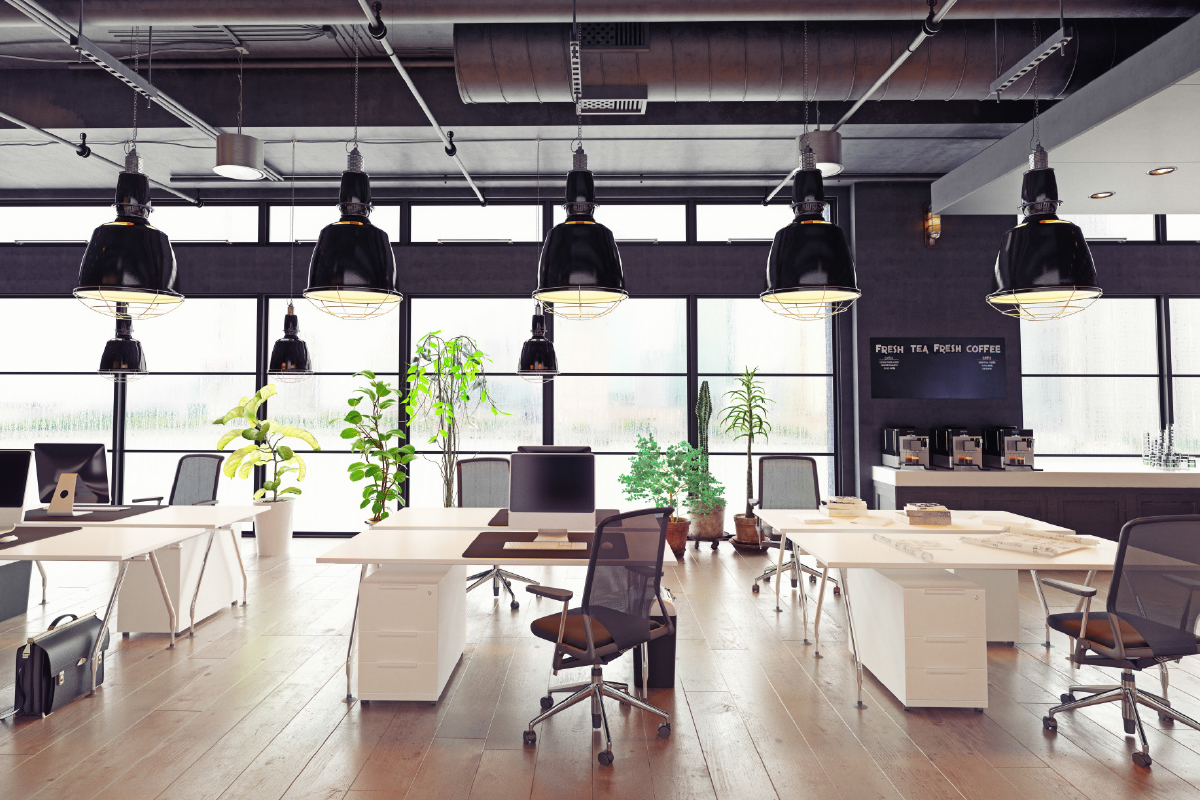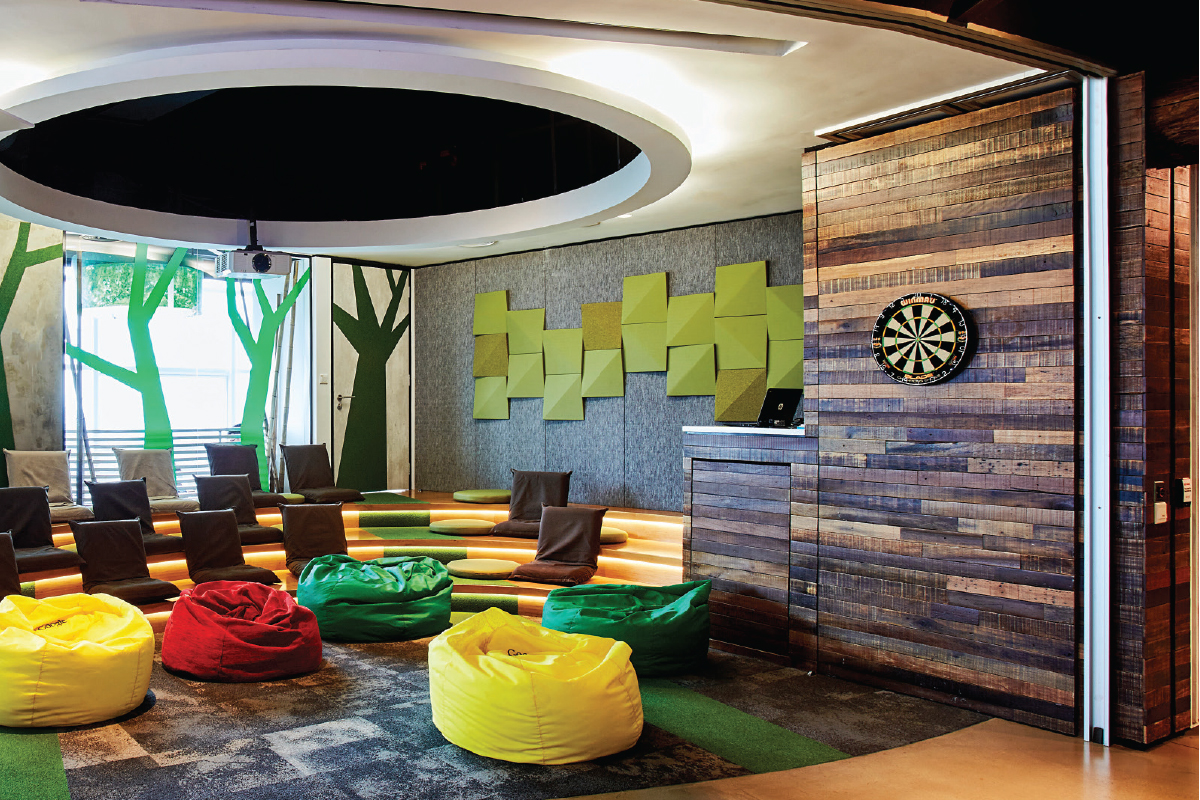
DiGi.com’s headquarters is an open paperless office (Photo by Veritas Architects)
This article first appeared in City & Country, The Edge Malaysia Weekly on November 16, 2020 - November 22, 2020
Work culture has changed over the years, with flexibility being the main theme. This, in turn, has changed the design of the workplace from traditional and compartmentalised to open and flexible.
Instead of having an individual cubicle or room, many workplaces now have a more relaxed atmosphere, where employees can sit anywhere they want to work. This is known as the hot-desking culture.
Other companies allow some of their employees to work away from the office. Thus, fewer desks are provided, as not everyone comes to the office.
Flexible workplaces and working outside the office, or remotely, are not new phenomena. But these approaches to work are increasingly being explored and practised now because of the Covid-19 pandemic, which has forced people to work from home.
It has resulted in the realisation that work can be done anywhere. “We used a lot of space before and, now, we can optimise the space [for something else], as we can work using electronic devices. Meeting rooms need not be big anymore because there is the option of video conferencing now,” notes SNO Architects Sdn Bhd founder Saifuddin Ahmad.
Before the pandemic, he noticed a trend in which some companies had a dedicated floor for meeting rooms. So, whoever worked remotely would return to the office only to use the meeting rooms for appointments with clients.
Besides working from home, the pandemic has also taken flexibility to another level, where workplaces should require less built-in infrastructure, says Veritas Architects Sdn Bhd director Lillian Tay.
“In a health crisis, tables need to be moved apart, but there are the cables to think about. So, going wireless is very important, as tables can be pushed apart without the worry of tearing off wires,” she adds.
Tay believes furniture should be portable enough to be moved apart as well. This kind of flexibility will allow offices to operate at a 50% capacity instead of resorting to a total shutdown, she says.
GRA Architects Sdn Bhd director Boon Che Wee sees no major changes to workplace designs post-Covid-19 besides temporary adjustments such as space sequencing in layout settings and additional dividers to comply with back-to-office standard operating procedures.
Work-from-home and workplace design
Saifuddin believes the work-from-home arrangement may continue after the pandemic, depending on the nature of the work. “You just need a good laptop with all the data in it and internet connection, and you can work from home or anywhere,” he says.
As such, he says, the size of the workplace may shrink, as employees no longer need a permanent space in the office. “For instance, you have 10 employees, and maybe you just have five working spaces and the rest of the staff will work from home. So, space planning will be different.”
Tay sees more companies opting for hot-desking. “You do not need to raise money and rent a half-empty office. Normally, people can work anywhere they want and meet weekly for discussions.”
The work-from-home arrangement is not necessarily due to the pandemic but is also because some work can indeed be done from home, and it is a good arrangement, especially for working mothers, she says.
“Work-from-home should be encouraged, as it will encourage mothers to remain in the workforce without being a disadvantage. Hopefully, this can create more gender equality in the workplace,” she adds.
Tay cautions, however, that it would be claustrophobic to just work from home. “We should not go overboard and work from home only. Face-to-face interaction is still valuable; relationships are still built on it.”
She agrees with Saifuddin that workplaces may become smaller because fewer people will be working in the office. “But companies will have to spend more on IT infrastructure for the employees. So, cost of rental will be shifted to IT allowances for people to have the capability to work outside the office,” she notes.
Boon concurs with Tay. “The work-from-home arrangement will continue but it will be limited to those who are equipped with essential support, which is the IT infrastructure, and firms that have obtained positive outcomes.”
Modern workplaces that focus on employees’ well-being
There has been a lot of talk about employees’ well-being in the workplace. Offices such as Google’s are a good example of places that offer a work environment that is relaxed and casual, and furnished with sofas, beanbags and slides. There are dedicated areas to wind down and have fun as well.
This type of office can also be found in Malaysia. In the early 2000s, Veritas completed DiGi.com Bhd’s headquarters, which is an open, paperless office. All desks provided are of the same size, even those used by the management team.
Moreover, every employee has a mobile phone, a locker and a small toolbox, allowing everyone to work at any desk or space that they choose.
According to Tay, a naturally ventilated atrium was included in the design and it has become a community-gathering place for staff.
“That is where they hold their townhalls. They never asked us to make a space for their townhall sessions but, because the space was there, they started holding it there. The CEO would stand on one of the bridges to talk and people would give performances on the bridges while others mingled around the atrium,” Tay explains.
This kind of open-plan workplace with balconies and bridges allow people to see each other. “It has what we call the ‘bumping factor’, where people bump into each other and have some engagement,” she adds.
Common spaces are important in a workplace as well, she says. “In the Digi building, there is a de-stress room with punching bags and squeezy balls. There is also a war room, where everyone goes to brainstorm for big projects. This sort of communal space is needed more.”
Such fun workplaces with common areas are the way forward, Saifuddin says. Sometimes there is a need to mix seriousness and pleasure, but he cautions that a line needs to be drawn between what is formal and what is informal.
“I think this kind of workplace is getting popular in Malaysia. Our population is quite young and, if they are used to this kind of casual working style, we should be looking into this. I think it will be a trend moving forward,” he observes.
For large firms, it would not be difficult to incorporate this workspace arrangement in their offices, as they have the space. For small and medium enterprises (SMEs) that work from a shophouse, however, it would be problematic because they do not have the space to make it happen, Tay notes.
Therefore, this is where co-living and co-working — environments in which the facilities and common areas are shared — come in. “It is a trend that already exists and will continue to exist for the sake of affordability. It is affordable for people to start up without having to rent an office. I think it will continue to be a strong trend,” she says.
Boon looks at workplace well-being in terms of the environment. “The quality of the workplace environment affects human performance. It is considered high priority in terms of invisible aesthetic and visual impact, which blend together to form the total aesthetic,” he explains.
Invisible aesthetic refers to the uplifting of employees’ spirits through sensory experience such as lighting and placement of windows.
He adds that the workplace should also focus on the employees’ comfort and functionality in addition to possessing an eye-pleasing design to create a healthy and happy environment.
The pandemic, other than redefining flexibility, has also prompted the evolution of workplace design to ensuring the health and well-being of employees. The new lifestyle adopted today may become a design trend in the near future, says Boon. “The trend will see human-centric design as the main focus in creating a comfortable, healthy and safe environment.”
As space sequencing is an important aspect to limit droplet spread besides providing privacy to individuals, spacing for individual occupancy might be reconsidered in the context of social distancing.
Apart from that, flexible or mobile workstations and simple, effective ideas for easy maintenance to mitigate contagion via surfaces will be a design consideration too.
“Forward-thinking design solutions and health safety are crucial in redefining the approach of using workplaces in the future. I believe the healthy design movement will carry on to set a future trend in environmental design, including workplaces,” Boon says.
Save by subscribing to us for your print and/or digital copy.
P/S: The Edge is also available on Apple's App Store and Android's Google Play.
- Authorities urge vigilance, calm after 5.4 magnitude quake hits Indonesia’s Banda Aceh
- Insolvency DG warns of rising trend in self-declared bankruptcy
- 5.1-magnitude aftershock hits north of Mandalay amid series of quakes — USGS
- Myanmar quake death toll hits 1,700 as aid scramble intensifies
- South Korea, China, Japan agree to promote regional trade as Trump tariffs loom





